Design of a Secondary Freeform Lens of UV LED Mosquito-Trapping Lamp for Enhancing Trapping Efficiency
Abstract
1. Introduction
2. Principles and Methods
2.1. UV LED Mosquito-Trapping Lamp(UVLMTL) with SFL
2.2. Design Method
3. Experiments and Experimental Results
3.1. Design of a Secondary Freeform Lens
3.1.1. Optical Modeling
3.1.2. SFL_PMMA Prototyping
3.2. Luminous Intensity Distribution Measurements
3.3. Real Machine Verification and Data Analysis
4. Conclusions and Discussion
Author Contributions
Funding
Acknowledgments
Conflicts of Interest
References
- Zinser, M.; Ramberg, F.; Willott, E. Scientific Note Culex quinquefasciatus (Diptera: Culicidae) as a potential West Nile virus vector in Tucson, Arizona: Blood meal analysis indicates feeding on both humans and birds. J. Insect Sci. 2004, 4, 20. [Google Scholar] [CrossRef] [PubMed]
- Chang, C.; Ortiz, K.; Ansari, A.; Gershwin, M.E. The Zika outbreak of the 21st century. J. Autoimmun. 2016, 68, 1–13. [Google Scholar] [CrossRef] [PubMed]
- Chen, H.L.; Tang, R.B. Why Zika virous infection has become a public health concern? J. Chin. Med. Assoc. 2016, 79, 174–178. [Google Scholar] [CrossRef] [PubMed]
- Bidlingmayer, W.L. How mosquitoes see traps: Role of visual responses. J. Am. Mosq. Control Assoc. Mosq. News 1994, 10, 272–279. [Google Scholar]
- Browne, S.M.; Bennett, G.F. Response of mosquitoes (Diptera: Culicidae) to visual stimuli. J. Med. Entomol. 1981, 18, 505–521. [Google Scholar] [CrossRef] [PubMed]
- Kay, R.E. Fluorescent materials in insect eyes and their possible relationship to ultra-violet sensitivity. J. Insect Physiol. 1969, 15, 2021–2028. [Google Scholar] [CrossRef]
- Shimoda, M.; Honda, K.I. Insect reactions to light and its applications to pest management. Appl. Entomol. Zool. 2013, 48, 413–421. [Google Scholar] [CrossRef]
- Burkett, D.A.; Butler, J.F.; Kline, D.L. Field evaluation of colored light-emitting diodes as attractants for woodland mosquitoes and other Diptera in north central Florida. J. Am. Mosq. Control Assoc. Mosq. News 1998, 14, 186–195. [Google Scholar]
- Lai, M.F.; Anh, N.D.Q.; Gao, J.Z.; Ma, H.Y.; Lee, H.Y. Design of multi-segmented freeform lens for LED fishing/working lamp with high efficiency. Appl. Opt. 2015, 54, E69–E74. [Google Scholar] [CrossRef] [PubMed]
- Lee, H.W.; Lin, B.S. Improvement of illumination uniformity for LED flat panel light by using micro-secondary lens array. Opt. Express 2012, 20, A788–A798. [Google Scholar] [PubMed]
- Guo, M.L.; Wei, Z.C.; Wang, M.J.; Lee, S.Q.; Liu, S.G. Prediction of Milling Force on Five-axis Machining of Flat-end Milling Cutter. J. Mech. Eng. 2018, 96, 137–152. [Google Scholar]

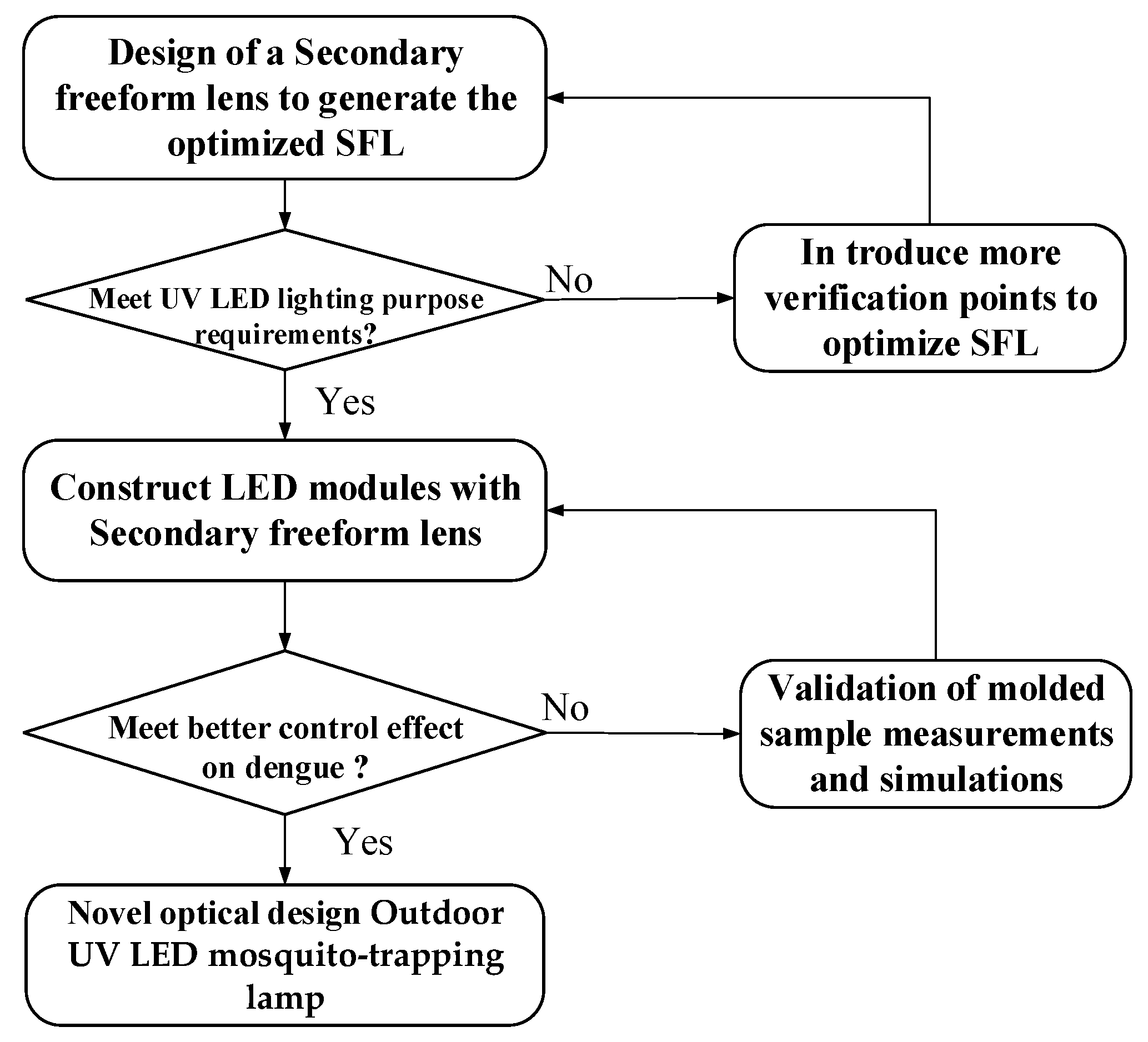

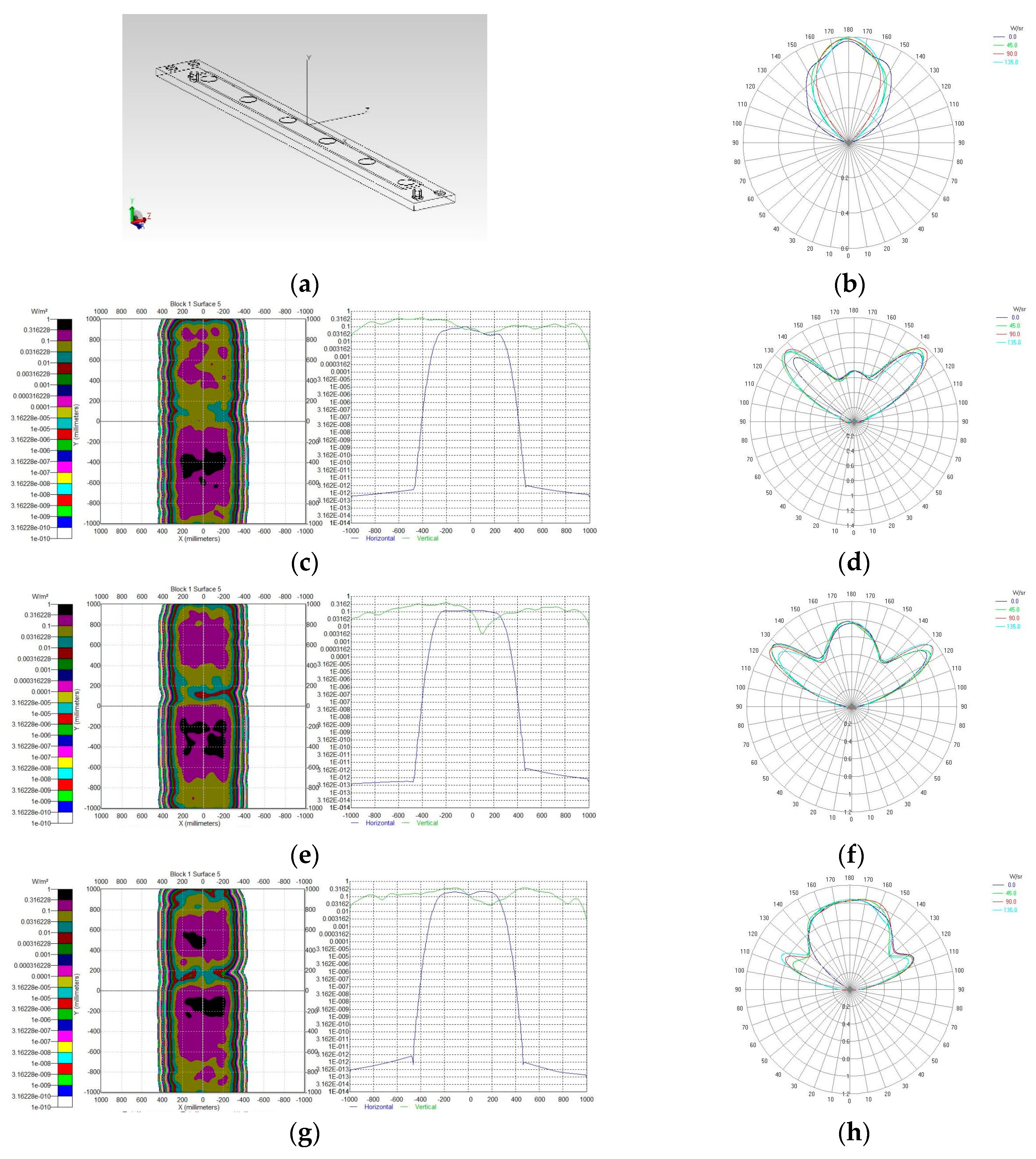
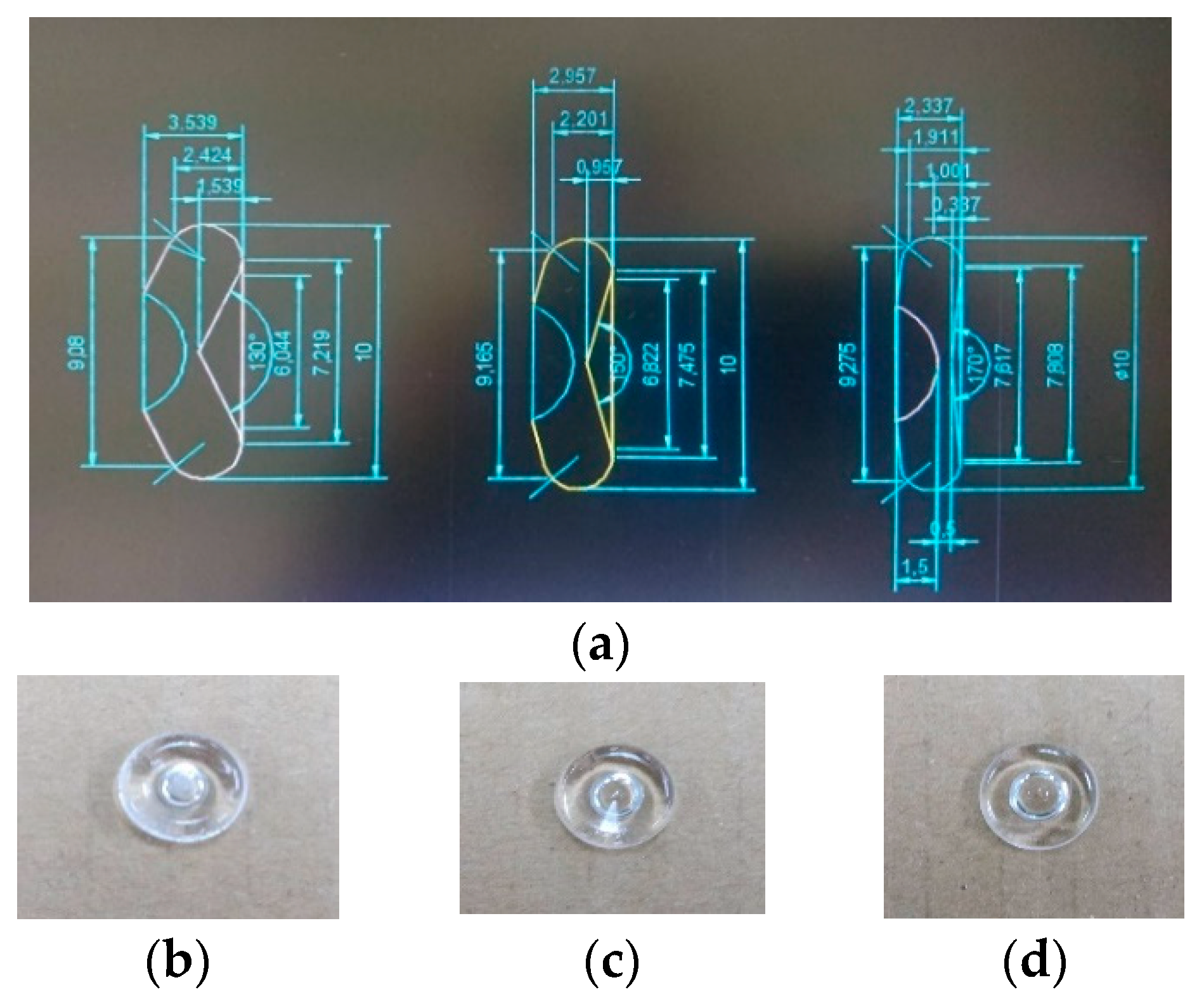

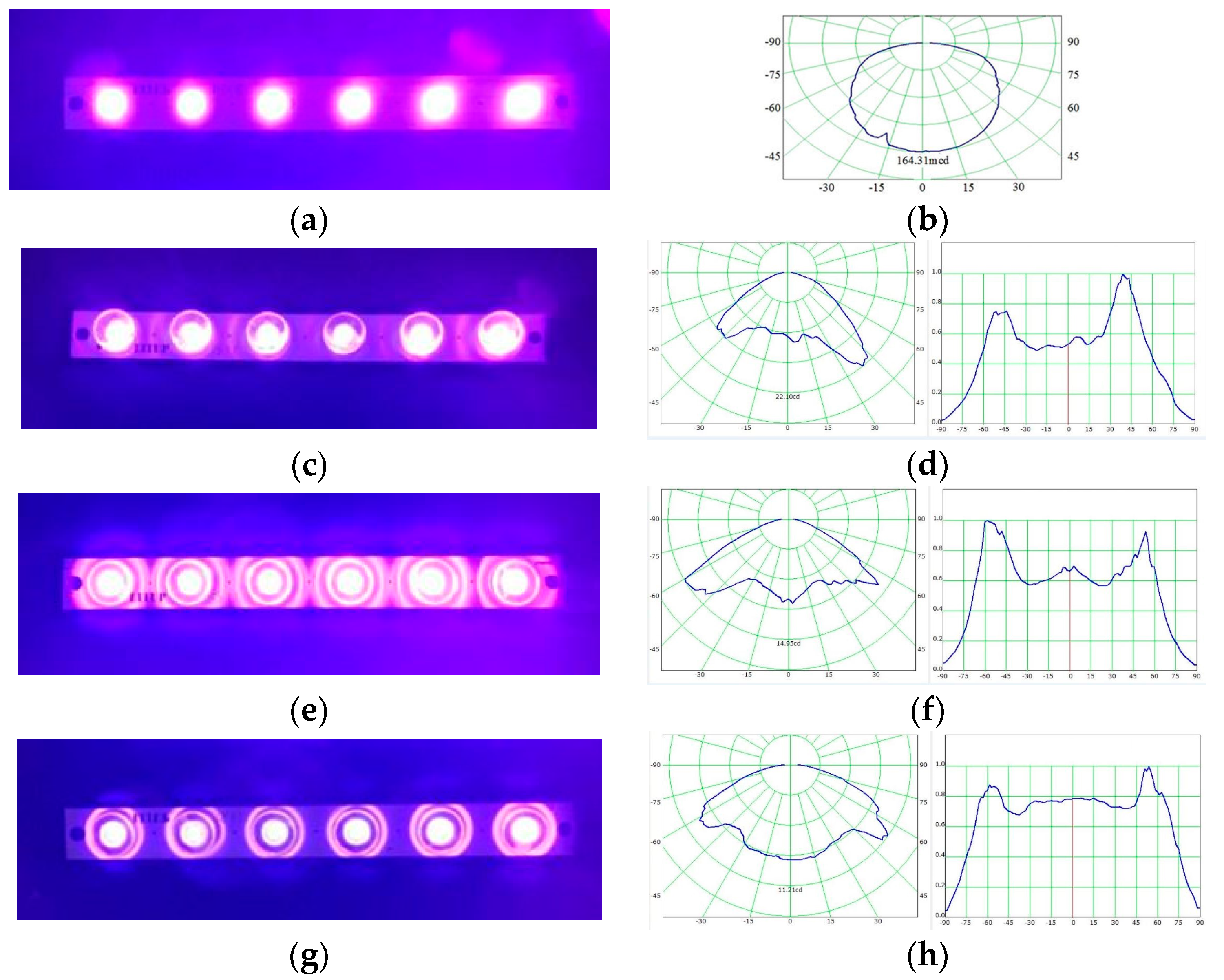

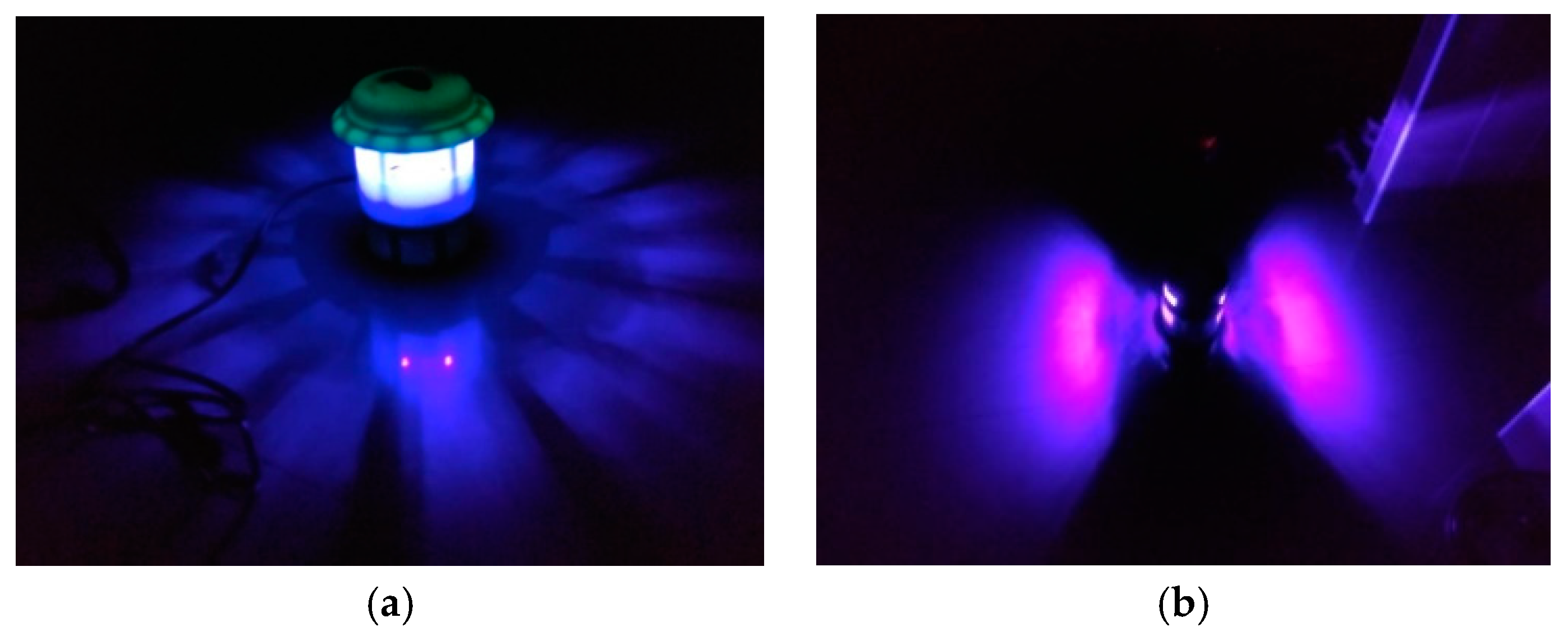
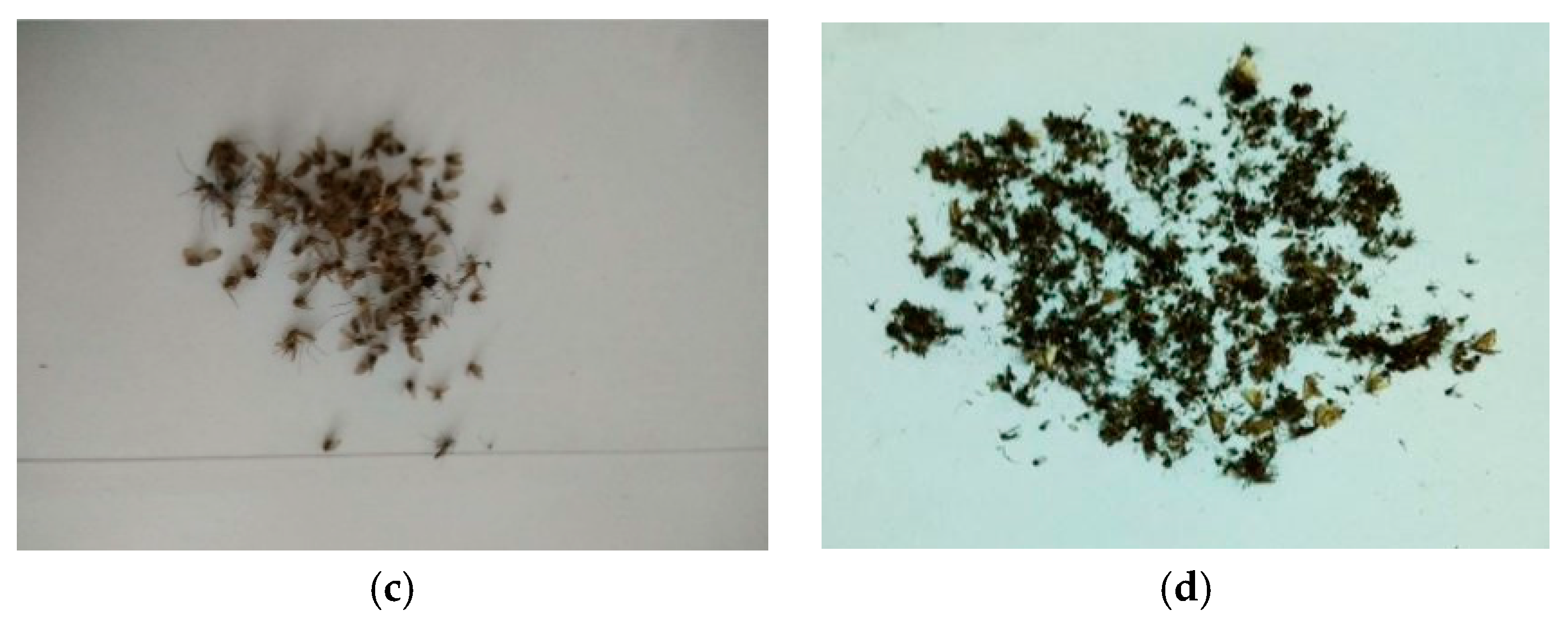
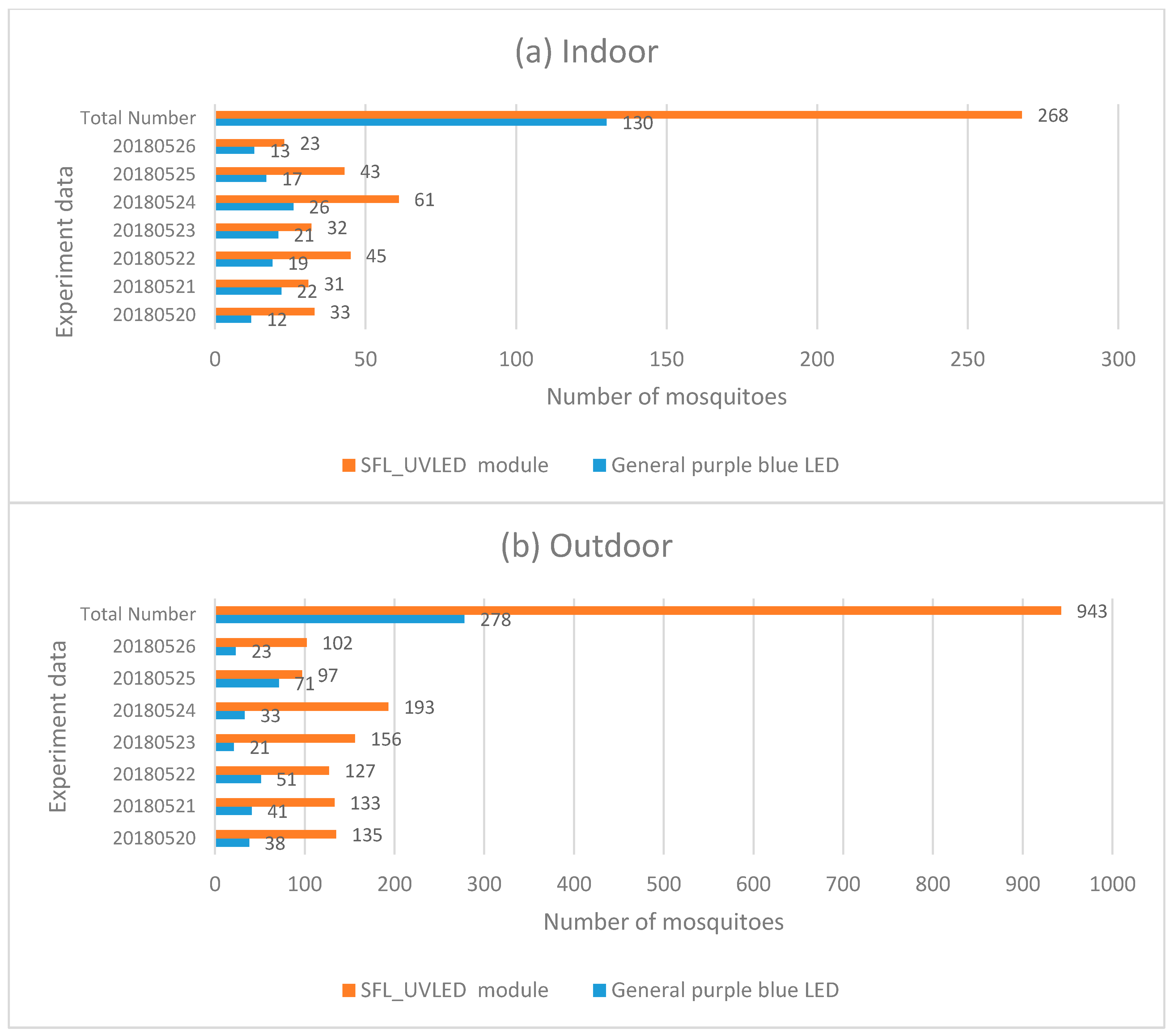
| Working Range 100π m2 | ||||
|---|---|---|---|---|
| General Purple Blue LED | UV LED Light Bar | SFL_UV LED Module (150°) | SFL_UV LED Module (130°) | SFL_UV LED Module (170°) |
| 278 | 519 | 943 | 613 | 405 |
© 2018 by the authors. Licensee MDPI, Basel, Switzerland. This article is an open access article distributed under the terms and conditions of the Creative Commons Attribution (CC BY) license (http://creativecommons.org/licenses/by/4.0/).
Share and Cite
Tseng, W.-H.; Juan, D.; Hsiao, W.-C.; Chan, C.-H.; Ma, H.-Y.; Lee, H.-Y. Design of a Secondary Freeform Lens of UV LED Mosquito-Trapping Lamp for Enhancing Trapping Efficiency. Crystals 2018, 8, 335. https://doi.org/10.3390/cryst8090335
Tseng W-H, Juan D, Hsiao W-C, Chan C-H, Ma H-Y, Lee H-Y. Design of a Secondary Freeform Lens of UV LED Mosquito-Trapping Lamp for Enhancing Trapping Efficiency. Crystals. 2018; 8(9):335. https://doi.org/10.3390/cryst8090335
Chicago/Turabian StyleTseng, Wei-Hsiung, Diana Juan, Wei-Cheng Hsiao, Cheng-Han Chan, Hsin-Yi Ma, and Hsiao-Yi Lee. 2018. "Design of a Secondary Freeform Lens of UV LED Mosquito-Trapping Lamp for Enhancing Trapping Efficiency" Crystals 8, no. 9: 335. https://doi.org/10.3390/cryst8090335
APA StyleTseng, W.-H., Juan, D., Hsiao, W.-C., Chan, C.-H., Ma, H.-Y., & Lee, H.-Y. (2018). Design of a Secondary Freeform Lens of UV LED Mosquito-Trapping Lamp for Enhancing Trapping Efficiency. Crystals, 8(9), 335. https://doi.org/10.3390/cryst8090335




